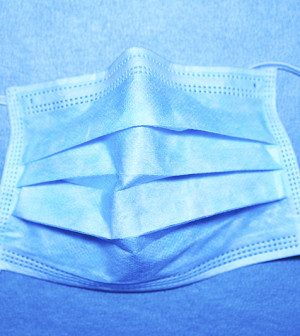- Skip Storing This Everyday Product in the Fridge Door
- Green Tea + B3 Pairing May Boost Brain Health
- Navigating Your Midlife Crisis: Embracing New Possibilities
- City Raccoons Showing Signs of Domestication
- Mapping the Exposome: Science Broadens Focus to Environmental Disease Triggers
- One Week Less on Social Media Linked to Better Mental Health
- Your Brain Changes in Stages as You Age, Study Finds
- Some Suicide Victims Show No Typical Warning Signs, Study Finds
- ByHeart Formula Faces Lawsuits After Babies Sickened With Botulism
- Switch to Vegan Diet Could Cut Your Greenhouse Gas Emissions in Half
Feeding Fido Raw Pet Food a Risky Choice: FDA


You may think you’re doing what’s best for your beloved pets when you feed them raw food, but you’re actually putting their health — and yours — at risk, the U.S. Food and Drug Administration warns.
Raw pet food — which consists primarily of uncooked meat or poultry, organs and bones — can carry disease-causing bacteria. Two types of bacteria are particularly dangerous to both pets and people — salmonella and Listeria monocytogenes.
People who favor a raw diet for their pets often note that feral dogs and cats catch prey and eat it raw, noted Dr. William Burkholder, veterinary medical officer in the agency’s division of animal feeds.
“That’s true, but we don’t know how many of these animals get sick or die as a result of doing that. Since sick feral animals are rarely taken to a veterinarian when they’re ill, there’s no way to collect that information,” he said in an agency news release.
Symptoms of salmonella-related illness in animals include: vomiting, diarrhea (which may be bloody), fever, loss of appetite and decreased levels of activity. Symptoms of listeria-related illness in pets include: nausea, diarrhea, fever and neurological problems.
You should cook raw meat and poultry to kill any harmful bacteria before you give the food to your pets, the FDA said.
You’re also at risk if you handle raw pet food and fail to take proper precautions and accidentally get bacteria in your mouth.
“If you’re going to handle raw foods, you need to pay particular attention to good hygienic practices,” Burkholder said. “Wash your hands and anything else that comes into contact with the product with hot, soapy water for at least 20 seconds.”
Feeding raw food to your pet also increases the risk that your pet will spread disease-causing bacteria.
“Even if the dog or cat doesn’t get sick, they can become carriers of salmonella and transfer the bacteria to their surroundings, and then people can get the disease from contact with the infected environment,” Burkholder noted.
Once salmonella is established in a pet’s digestive system, the animal releases the bacteria when it has a bowel movement, and the contamination continues to spread.
“Feeding raw foods to pets increases the risk that both the pet and the people around the pet will encounter bacteria that cause foodborne illness, particularly if the products are not carefully handled and fed. This is certainly one factor that should be considered when selecting diets for your pet,” Burkholder noted.
More information
The U.S. National Library of Medicine has more about foodborne illness in people.
Source: HealthDay
Copyright © 2025 HealthDay. All rights reserved.










